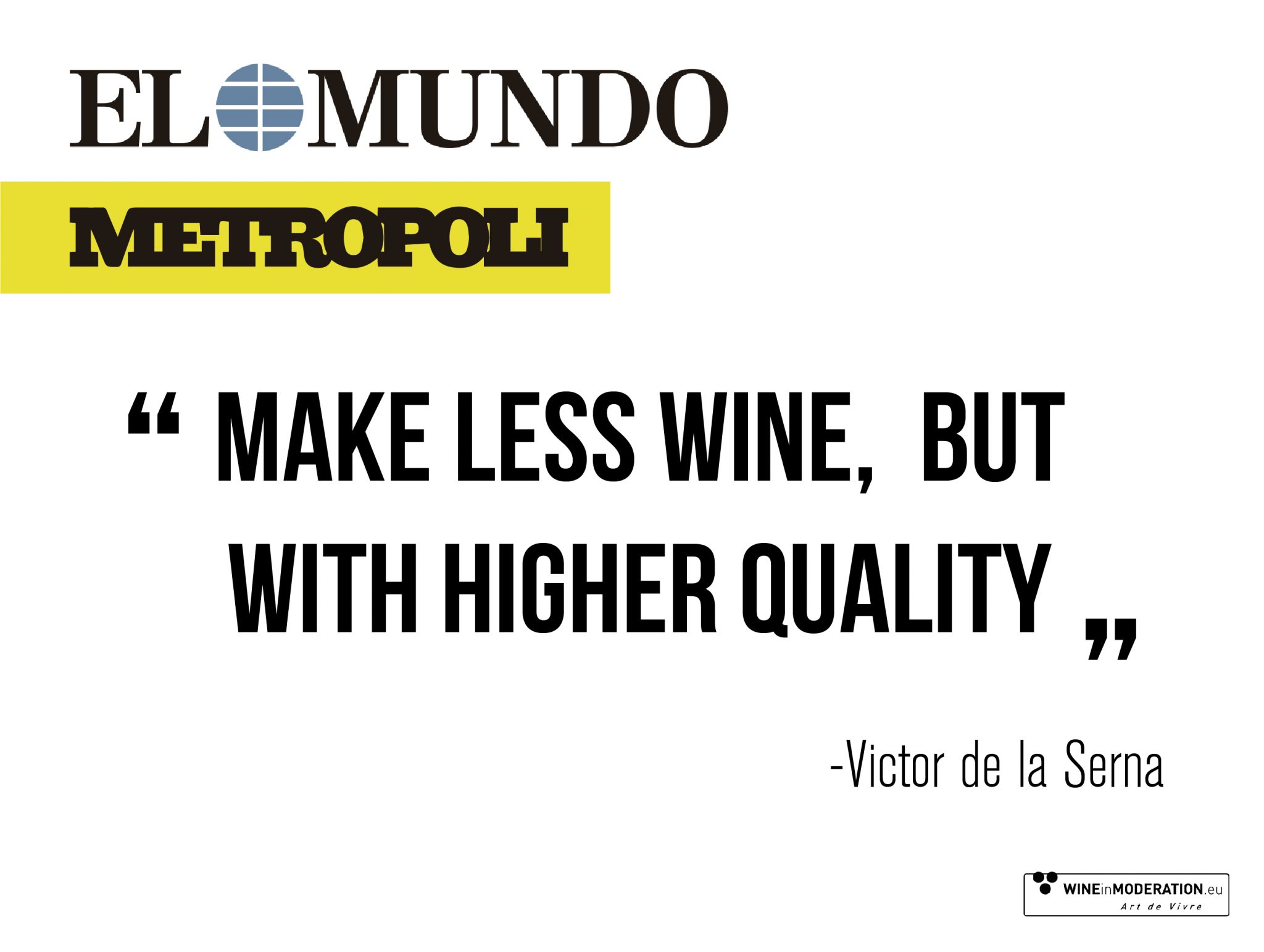Víctor de la Serna, one of the most important journalists in Spain and one of the most prestigious gatsronomic critics in the country has dedicated his column to the project of our wineries: Valdelacierva (Rioja) and Viñedos y Bodegas Gormaz (Ribera del Duero). The article translated:
Make less wine, but much better.
Hispanobodegas, the winery group founded a couple of years ago with wineries in Rioja (Valdelacierva), Ribera del Duero (Viñedos y Bodegas Gormaz) and Rueda (Bodegas GarciGrande), is evolving in an interesting way within the current Spanish landscape: initially designed for the high production of mid-range wines, it is now drifting towards wines from the terroir, from plots, and focusing on personality. A tasting of the latest wines from the wineries in Rioja and Ribera del Duero confirms that they are on the right track.
It is enough to see that between Valdelacierva and Gormaz – the former cooperative of San Esteban de Gormaz, privatised in 2004 – they control more than 400 hectares of land. This accounts for its initial high-volume intentions, which is the case with many Spanish wineries in these two denominations, not to mention the bulk and supermarket wine areas of the southern half.
As the owners explain, the group is trying to diversify, reduce production and increase the level of quality and price. However, the company is not doing this in the style of the 90s – nor even the early 2000s – by basing it on luxurious oak wines, but instead opting for an in-depth study of its own excellent wine-growing heritage, in order to identify the vines with potential, finesse and personality. This is achieved through a careful study of their soils and orientations, whose grapes are assembled in ‘cuvées’ of modest size, or in some cases produced from a single plot.
Valdelacierva, based in Navarrete, has the essentials of its vineyards in Sonsierra and Rioja Alavesa, although it has just acquired old plots of Grenache in Tudelilla. Gormaz, which is the most eastern, highest and coldest part of Ribera, has vineyards in places that are now gaining popularity, such as Atauta or Alcubilla de Avellaneda. Garcigrande, as they explained to us, is only in the first steps of that reconversion.
Two women direct the oenological tasks and, from what we have seen, the control of the wine-growing: Emma Villajos Barja in Valdelacierva and María José García Moreno in Gormaz. Their styles are similar: delicacy in the treatment of the grape, little extraction and little submission to the new oak.
We will have to keep an eye on this company, because for us, it seems like a good model for a reconversion towards the quality and the terroir of the unbalanced Spanish wine industry.
From the Rioja winery, we have been very impressed by the delicate Valdelacierva Grano a Grano, a Tempranillo from the Finca La Botija in Baños de Ebro, whose grapes are completely destemmed by hand to keep them whole and culminate in an impeccable intracellular maceration. We also enjoyed the fresh Valdelacierva Garnacha, from 75-year old vines in the Finca La Pedriza de Tudelilla.
Gormaz, under its 12 Linajes brand, also makes a remarkable Grano a Grano from a single vineyard in Quintanilla de Tres Barrios and a promising 12 Linajes Finca Los Arenales.
